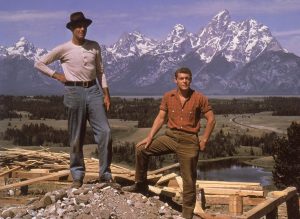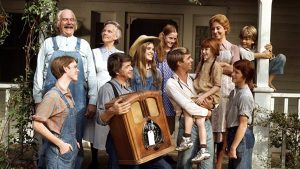The Setting of The Waltons
The Waltons, a well-regarded American television series, aired over a decade from 1972 to 1981 and captured the essence of rural Virginia during the monumental epochs of the Great Depression and World War II. The series provides a vivid tapestry of life in the 1930s and 1940s, authentically reflecting not only the stone challenges faced by common people but also the cultural norms that pervaded and molded family dynamics in this transformative era.
The backdrop of the show not only deepens the narrative but also offers viewers a window into the societal structure and norms of the time. By portraying characters trying to navigate through difficult economic times, the show highlights the resilience of families during two of the most trying periods in modern American history.
Gender Roles in the 1930s
In the 1930s, society was largely guided by the tenet of traditional gender roles. During this period, the societal expectation was clear: men were positioned as the primary providers for their families, entrusted with securing financial stability. They were typically involved in paid labor, which laid upon them the mantle of the financial backbone of families across the nation. The role of men during this time was not only a reflection of cultural expectations but also a practical response to the limited job opportunities for women.
Conversely, women were relegated predominantly to managing the household. They shouldered the significant responsibilities of child-rearing and maintaining the home. This dichotomy in gender roles was deeply interwoven into the fabric of everyday life, in part due to economic pressures and scant workforce opportunities for women. Institutions often reaffirmed these roles, leaving women few choices but to comply with societal norms, ensuring the household ran smoothly amidst economic uncertainties.
Male Roles in The Waltons
John Walton Sr., a central figure in The Waltons, is depicted as the archetypical male figure of the 1930s and 1940s. His character embodies the hardworking and steadfast nature that was expected of men during this era. As the patriarch of the Walton family, John takes immense pride in his ability to provide for his family’s physical needs. He manages a lumber mill, seamlessly merging his role as a provider with the agrarian way of life that was common for many American families.
John’s moral compass and work ethic serve as a steadying force for the Walton family, and his unyielding dedication is representative of the era’s ideal paternal figure. Men like John were expected to lead their families not only through economic endeavors but also by offering guidance and stability to withstand the pressures of the times.
Female Roles in The Waltons
Olivia Walton, John’s wife, personifies the quintessential homemaker of the early 20th century. Her life revolves around a comprehensive set of domestic responsibilities. From providing care and nurturing for the children to managing various household duties, Olivia’s character showcases the typical life of women who were integral to maintaining the home.
Her support for John and their children is portrayed as a pillar of familial strength. Yet, Olivia’s role, while essential, also reflects the historical undervaluing of women’s contributions. Despite the significant influence women had in shaping the household environment and the upbringing of the next generation, their work was often viewed as secondary to the economic contributions of men.
Challenges to Traditional Roles
While The Waltons predominantly portrays and perhaps unintentionally endorses the rigid gender norms of the 1930s, it also subtly critiques and challenges these roles. This is particularly evident through the exploration of the younger generation’s evolving aspirations. The children of John and Olivia, notably the daughters, begin to expose cracks in conventional expectations.
Characters such as Mary Ellen Walton exhibit desires and ambitions that defy the narrowly defined female roles of their time. Her aspiration to become a nurse serves as a narrative fulcrum pivoting towards an era where women began to exercise more agency over their careers and lives. This subtle challenge suggests an awareness of the growing opportunities and changing ambitions for women, hinting at the social transformations that were gradually taking root.
The inclusion of such forward-thinking characters within the show indicates a nuanced portrayal of the time, where even amidst a rigid structure, there was room for questioning and expanding the narrative of a woman’s place beyond domesticity.
In summation, The Waltons deftly balances portraying the era’s prevalent gender norms with a light critique of its limitations. By doing so, it provides a meaningful insight into the sociocultural dynamics of American families during the 1930s, illustrating how deeply intertwined economic circumstances and social expectations were in shaping gender roles.
Ultimately, the series serves as not only an entertainment vehicle but also a historical artifact. It offers viewers a deeper understanding of the complexities and evolution of familial structures during one of the most critical periods in modern American history.

